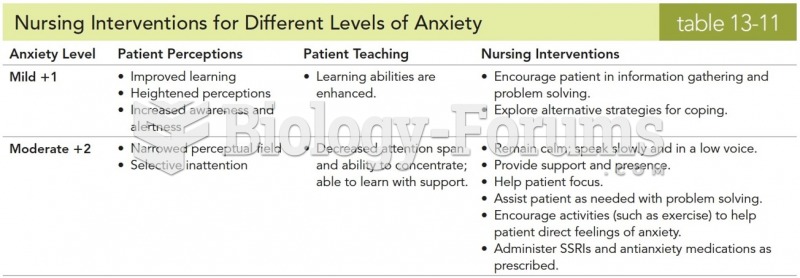Answer to Question 1
ANS: A
Planning is the third step of the nursing process. During the planning phase, the professional nurse prioritizes the patient's nursing diagnoses, determines short- and long-term goals, identifies outcome indicators, and lists nursing interventions for patient-centered care. Patients should be included in the planning process. Involving patients in planning their care helps them to (1) be aware of identified needs, (2) accept realistic and measurable goals, and (3) embrace interventions to best achieve the mutually agreed-on goals. Inclusion of patients in the planning process tends to improve goal attainment and patient cooperation with interventions. By accepting guidance and input from patients during the planning process, the nurse provides them with a greater sense of empowerment and control. Depending on the patient's condition or circumstances, it may be advantageous to include members of the patient's support system (i.e., family, friends, and caregivers) in the planning phase.
Answer to Question 2
ANS: C
Goals are broad statements of purpose that describe the aim of nursing care. Goals represent short- or long-term objectives that are determined during the planning step. Some sources establish time parameters for short- and long-term goals, whereas others do not. According to Carpenito-Moyet, goals that are achievable in less than a week are short-term goals, and goals that take weeks or months to achieve are long-term goals. Useful and effective goals have certain characteristics. They are mutually acceptable to the nurse, patient, and family. They are appropriate in terms of nursing and medical diagnoses and therapy. The goals are realistic in terms of the patient's capabilities, time, energy, and resources, and they are specific enough to be understood clearly by the patient and other nurses. They can be measured to facilitate evaluation.







